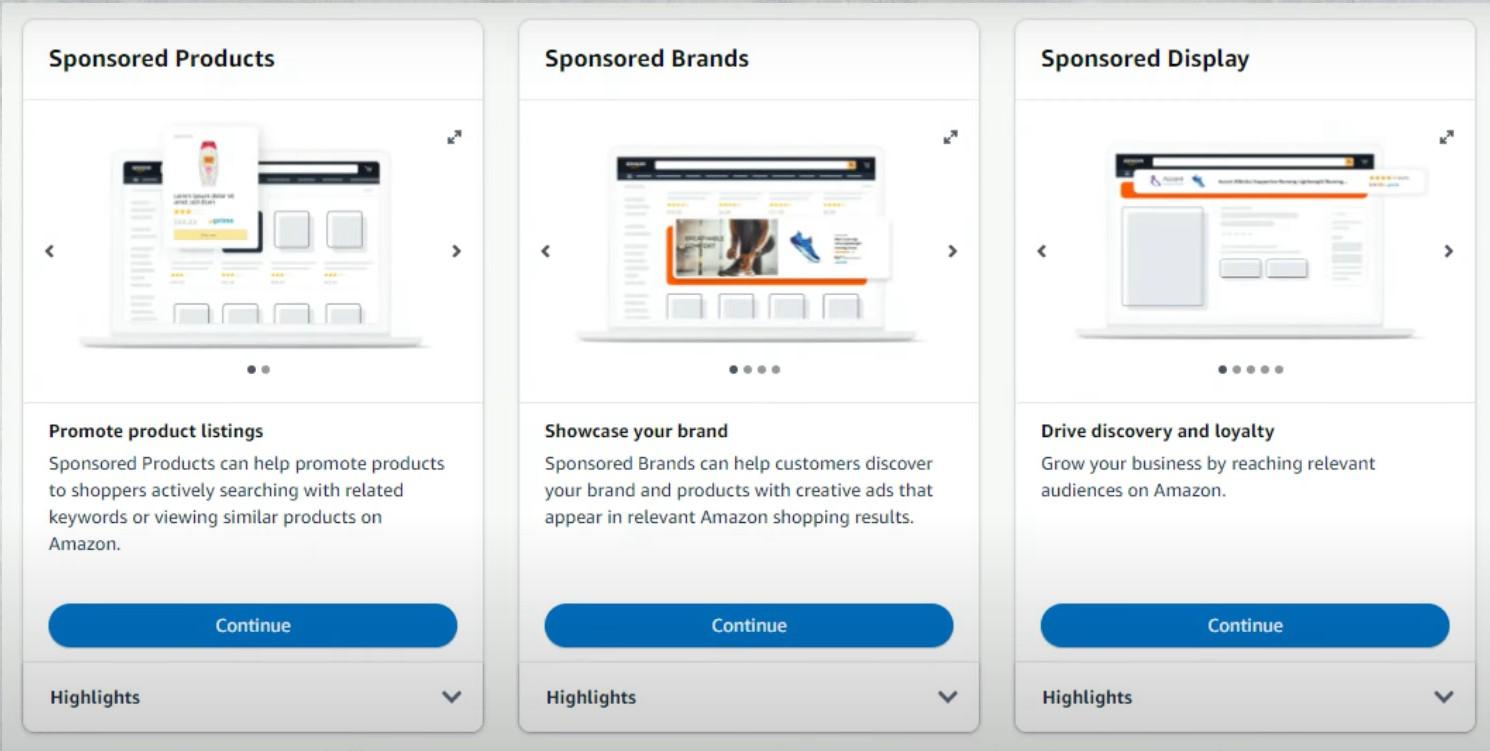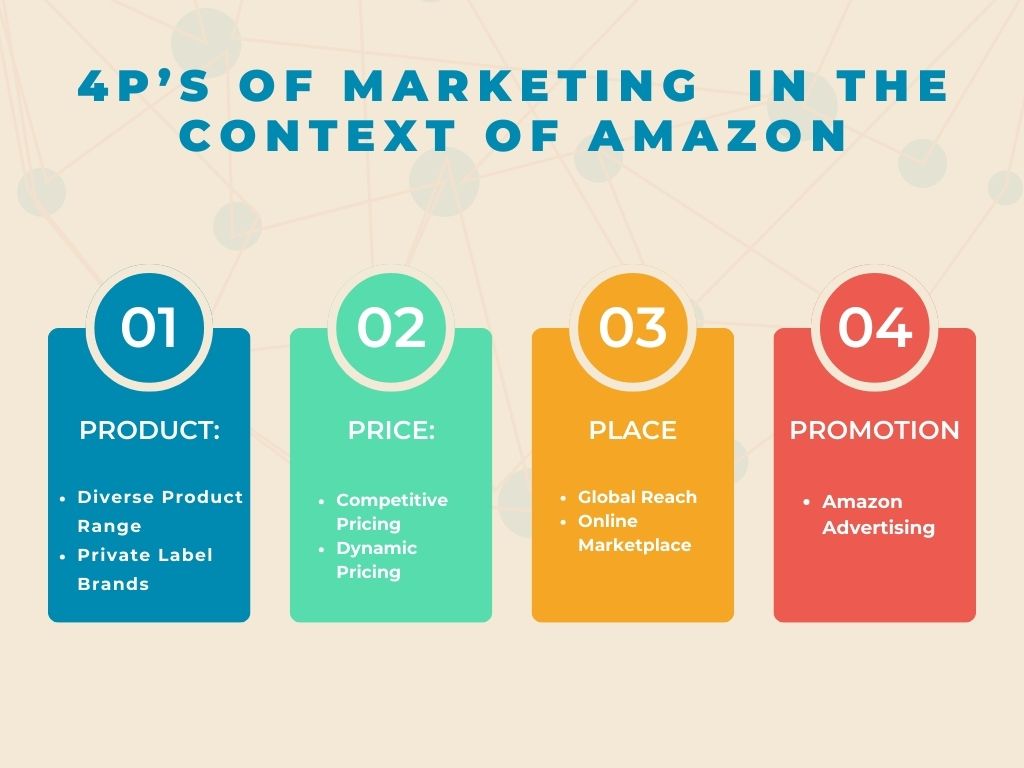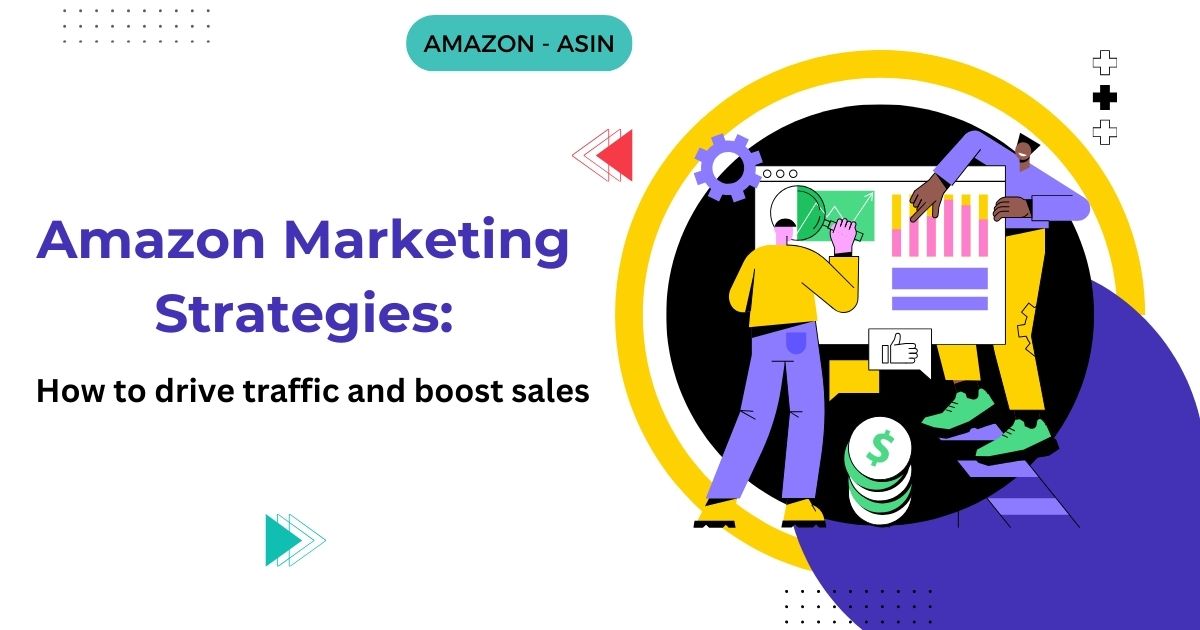In the vast expanse of the e-commerce universe, one giant stands head and shoulders above the rest – Amazon. With its colossal reach and market influence, Amazon has become the go to destination for online shoppers worldwide. As we enter 2023, understanding and harnessing the power of Amazon’s marketing strategies has become more critical than ever for sellers aiming to thrive in this dynamic digital landscape.
Quick Guide:
- Importance of Effective Marketing Strategies for Sellers on Amazon
- Understanding Amazon’s Marketing Strategy
- Why Marketing on Amazon is Crucial
- Enhancing Your Amazon Marketing Strategy
- Amazon Marketing Strategies to Boost Sales
- Amazon Marketing Channel Types
- Marketing Mix of Amazon
- Platforms and Channels of Amazon Marketing
- Amazon’s Marketing Strategies
- Tips for Your Amazon Marketing Strategy 2023
- Conclusion
Importance of Effective Marketing Strategies for Sellers on Amazon
In a virtual marketplace teeming with competition, the need for a well-crafted marketing strategy on Amazon cannot be overstated. While the platform provides an immense opportunity for sellers to showcase their products, it also presents a daunting challenge – standing out amid the vast array of choices available to consumers. This is where effective marketing strategies come into play, acting as the catalyst for visibility, engagement, and success.
Sellers on Amazon must recognize that beyond offering quality products, a strategic marketing approach is the key to carving a niche in this bustling digital marketplace. Whether you’re a seasoned seller or just dipping your toes into the Amazon waters, understanding and implementing effective marketing tactics will be the linchpin of your success in 2023 and beyond.
Understanding Amazon’s Marketing Strategy
To decode Amazon’s unparalleled success, it’s essential to embark on a journey into the heart of its overarching marketing approach. Amazon’s strategy isn’t a monolithic entity; it’s a dynamic fusion of customer-centric philosophies, technological innovations, and a relentless pursuit of efficiency.
At its core, Amazon’s marketing approach revolves around an obsession with customer satisfaction. The customer is not just king on Amazon, they are the heartbeat of the entire ecosystem. The platform’s commitment to providing a seamless, frictionless shopping experience has become legendary. From the moment a user lands on the site to the swift doorstep delivery, every aspect of Amazon’s strategy is geared towards delighting the customer.
Amazon’s marketing approach extends beyond traditional advertising. It leverages cutting-edge technologies like artificial intelligence and machine learning to understand customer behavior, predict preferences, and make personalized recommendations. This customer-centric, data-driven approach ensures that every interaction with the platform is tailored to the individual user, fostering a sense of loyalty and trust.
Moreover, Amazon embraces a culture of innovation. From the introduction of Alexa-powered devices to the integration of augmented reality for virtual product try-ons, the company consistently pushes the boundaries of what’s possible in the digital realm. This innovative spirit keeps Amazon ahead of the curve and generates buzz and excitement, contributing significantly to its marketing success.
Key Components that Contribute to Amazon’s Marketing Success
Amazon’s marketing success is not a happy accident but a result of meticulously planned and executed strategies. Several key components underpin this success:
Prime Membership:
The introduction of Amazon Prime has revolutionized customer loyalty. Offering perks like expedited shipping, exclusive access to content, and special deals, Prime has become a cornerstone of Amazon’s customer retention strategy.
User Reviews and Ratings:
Amazon understands the power of social proof. The platform actively encourages users to leave reviews and ratings, creating a transparent feedback loop that helps customers make well-informed decisions and builds trust in the brand.
Amazon Advertising:
The advertising ecosystem within Amazon is a powerhouse. From Sponsored Products to Display Ads, sellers can strategically place their products in front of potential customers. This pay-per-click model ensures advertisers only pay for actual engagement.
Logistics and Fulfillment:
Amazon’s logistics and fulfillment infrastructure is a game-changer. The promise of swift and reliable deliveries enhances the customer experience and positions Amazon as a brand that delivers on its promises.
Cross-Selling and Upselling:
Amazon suggests additional products based on customer preferences. Through a sophisticated algorithm, the platform entices users to explore complementary or upgraded items, increasing the average transaction value.
Why Marketing on Amazon is Crucial
Amazon’s ecosystem is inherently designed to reward visibility. With millions of products available, merely listing your items is not enough. A well-crafted marketing strategy is a beacon that guides potential customers to your products amid the sea of choices. Whether through strategic ad placements, compelling product listings, or enticing promotions, a robust marketing approach is the key to capturing the attention of discerning consumers.
Moreover, Amazon’s algorithm rewards active and engaged sellers. The more your products are interacted with – be it through clicks, purchases, or positive reviews – the higher they rank in search results. This symbiotic relationship between marketing efforts and algorithmic favor underscores the critical importance of a comprehensive marketing strategy on Amazon.
Insights into the Competitive Nature of the Amazon Marketplace
The Amazon marketplace is a bustling digital marketplace akin to a virtual shopping mall, with millions of sellers vying for the attention of a discerning and diverse consumer base. The competitive nature of this environment necessitates a strategic and proactive approach to marketing.
In this arena, simply having a great product is not enough. It’s about making your product stand out, creating a compelling narrative, and establishing a memorable brand presence. A robust marketing strategy ensures visibility and helps differentiate your brand from competitors, fostering brand loyalty and repeat business.
The competitive landscape on Amazon is dynamic and ever-evolving. New sellers enter the fray regularly, and consumer preferences shift swiftly. Adapting to these changes requires a marketing strategy that is effective and agile. By staying aware of current market trends and understanding consumer preferences, behavior, sellers can position themselves ahead of the curves and surpass the competition through strategic maneuvering.
Statistics and Trends Highlighting the Impact of Marketing on Sales Performance
The numbers tell a compelling story – the impact of marketing on Amazon directly correlates with sales performance. Studies and trends consistently underline the significance of a well-executed marketing strategy:
- Conversion Rates: Products with strategic marketing efforts, such as optimized product listings and targeted advertising, experience higher conversion rates, translating to increased sales.
- Ad Spend ROI: Sellers leveraging Amazon Advertising witness a favorable return on investment (ROI). Targeted ads generate increased visibility, leading to higher click-through rates and ultimately driving sales.
- Customer Trust: Brands that actively engage in marketing, garnering positive reviews and showcasing a strong online presence, tend to enjoy higher customer trust. This trust is a valuable asset in a competitive marketplace.
- Seasonal Trends: Adapting marketing strategies to seasonal trends and events can lead to spikes in sales. Capitalizing on peak shopping periods or creating themed promotions aligns with consumer behavior.
Enhancing Your Amazon Marketing Strategy
Importance of Continuous Improvement in Marketing Tactics
In the dynamic realm of Amazon, where algorithms evolve, consumer behaviors shift, and competitors adapt, the importance of continuous improvement in marketing tactics cannot be overstated. A static strategy is akin to standing still on a moving train – you risk getting left behind.
Successful Amazon sellers understand that optimization is an ongoing process. Regularly assessing and refining your marketing tactics ensures relevance in changing market dynamics. This could involve tweaking keywords for better discoverability, updating product listings to reflect current trends, or refining ad campaigns based on performance metrics. The iterative nature of improvement is not just a strategy; it’s a survival mechanism in the ever-evolving e-commerce landscape.
Utilizing Data Analytics for Strategy Optimization
Data is the currency of the digital age, and on Amazon, it’s the key to unlocking strategic insights that can propel your business forward. Leveraging data analytics is not just a competitive advantage; it’s a prerequisite for success. Amazon provides a treasure trove of data from customer search patterns to click-through rates and conversion metrics.
Analyzing this data empowers sellers to make informed decisions. Identifying which products resonate with customers, understanding the effectiveness of different advertising channels, and discerning the impact of pricing strategies are all vital components of strategy optimization. Whether through Amazon’s built-in analytics tools or external platforms, sellers who harness the power of data gain a strategic edge in refining their marketing approach.
Incorporating Customer Feedback and Market Trends into Your Approach
Customers are not just the end-users; they are valuable sources of insights that can shape and refine your marketing strategy. Actively seeking and incorporating customer feedback is a two-fold strategy. Firstly, it fosters a customer-centric approach, showing that your brand values and listens to its customers. Secondly, it provides invaluable insights into areas of improvement and potential innovations.
Market trends are another compass that can guide your strategy. Staying abreast of shifts in consumer preferences, emerging technologies, and industry developments allows you to adapt proactively. Whether responding to changes in search algorithms or capitalizing on a burgeoning trend, aligning your strategy with market dynamics positions your brand as a follower and trendsetter.
Amazon Marketing Strategies to Boost Sales
Overview of Proven Marketing Strategies to Increase Product Visibility
Optimized Product Listings:
Crafting compelling, keyword-rich product listings is the bedrock of increasing visibility. An effective listing improves search rankings and entices potential customers to click and explore.
Strategic Keyword Placement:
Understanding and incorporating relevant keywords strategically in product titles, descriptions, and backend search terms is crucial. This optimization aligns your products with customer searches, enhancing visibility.
Enhanced Brand Content (EBC):
EBC allows for visually appealing and informative product pages for brand-registered sellers. High-quality images, engaging videos, and enhanced product descriptions can significantly boost customer engagement.
Utilizing Amazon’s A9 Algorithm:
Understanding how Amazon’s A9 algorithm works is essential. Factors like conversion rates, click-through rates, and customer satisfaction contribute to how products are ranked. Prioritizing these metrics can positively impact product visibility.
Leveraging Amazon Advertising for Optimal Results
Sponsored Products:
Pay-per-click (PPC) campaigns for individual products can increase visibility by placing them prominently in search results. Strategic bidding and keyword selection are crucial for maximizing ROI.
Sponsored Brands:
Ideal for brand awareness, Sponsored Brands allow sellers to showcase a customized headline, logo, and multiple products in a single ad. This format is effective in creating a cohesive brand presence.
Sponsored Display Ads:
Targeting specific audiences based on shopping behavior and interests, Sponsored Display Ads can boost visibility both on and off Amazon. These ads appear on product search results, detail pages, and external websites.
Amazon DSP (Demand-Side Platform):
For a more comprehensive approach, Amazon DSP enables sellers to reach audiences beyond the Amazon platform, increasing brand exposure and potentially driving traffic back to their products.
Implementing Promotions, Discounts, and Special Offers to Drive Sales
Lightning Deals:
Limited-time promotions that offer significant discounts can create a sense of urgency among customers. Lightning Deals are prominently featured on Amazon’s Deals page, increasing visibility.
Coupons:
Offering digital coupons on product pages encourages conversions. Coupons are visible to customers, providing an extra incentive to purchase.
Percentage-Off Promotions:
Temporarily reducing the price of a product by a percentage can attract price-sensitive customers. This can be strategically timed to coincide with peak shopping periods or to compete with similar products.
Bundle and Save:
Creating product bundles with a discounted price compared to individual purchases encourages customers to buy more. This strategy not only boosts sales but also enhances the offer’s perceived value.
Amazon Marketing Channel Types
Exploration of Various Marketing Channels Available on Amazon
Amazon provides diverse marketing channels that empower sellers to connect with their target audience. Understanding these channels is pivotal for creating a tailored and effective marketing strategy. Here’s an exploration of the key marketing channels on Amazon:
Vendor Central:
This channel is designed for manufacturers and distributors. It allows brands to sell products directly to Amazon and then to consumers. Vendor Central provides access to additional marketing and promotional tools.
Seller Central:
Geared towards individual sellers and small to medium-sized businesses, Seller Central enables sellers to list and sell products directly to consumers. It offers a range of marketing tools and flexibility in managing inventory.
Amazon Advertising:
This encompasses a suite of advertising options to promote products and drive visibility. Sponsored Products, Brands, and Display Ads are integral to Amazon Advertising.
Amazon Stores:
A customized multi-page shopping experience, Amazon Stores allow sellers to create a branded storefront. This is an excellent way to showcase a curated selection of products and build brand identity.
Detailed Breakdown of Sponsored Products, Sponsored Brands, and Sponsored Display Ads

Sponsored Products:
These are targeted ads for individual product listings, appearing in search results and product pages. Sellers bid on keywords, displaying ads when relevant searches occur. They operate on a pay-per-click (PPC) model, where sellers only pay when a customer clicks on the ad.
Sponsored Brands:
These ads feature a custom headline, logo, and multiple products. They are typically displayed at the top of search results, providing brand visibility and allowing for a cohesive brand message. Like Sponsored Products, Sponsored Brands also operate on a PPC model.
Sponsored Display Ads:
These ads reach customers both on and off Amazon. They can appear on product detail pages, customer reviews, and Amazon marketing emails. Sponsored Display Ads enable targeting based on interests and shopping behavior, making them versatile for reaching a broader audience.
How to Choose the Right Channel Based on Product Type and Target Audience
Consider Product Type:
Different products may benefit from different channels. For example, if you have a new product that needs exposure, Sponsored Products may be the right choice. Sponsored Brands might be more suitable if you want to showcase a range of products under your brand.
Understand Target Audience:
Consider the demographics and behavior of your target audience. If your audience is actively searching for specific products, Sponsored Products can capture their attention. If building brand awareness is a priority, Sponsored Brands with a strong visual impact may be more effective.
Budget and Goals:
Assess your advertising budget and overall marketing goals. Sponsored Products can be a cost-effective way to start, as you have control over bid amounts. Sponsored Brands and Display Ads may require a larger budget but offer broader visibility and brand impact.
Evaluate Performance:
Regularly monitor the performance of your ads on different channels. Analyze metrics such as click-through rates(CTR), conversion rates, and return on ad spend. Adjust your strategy based on the channels yielding the best results for your products and goals.
Marketing Mix of Amazon

Product:
- Diverse Product Range: Amazon’s product portfolio spans virtually every category imaginable, offering customers an extensive selection.
- Private Label Brands: Besides hosting third-party sellers, Amazon has successfully introduced its private label brands, expanding its product offerings.
Price:
- Competitive Pricing: Amazon is renowned for its competitive pricing strategy, leveraging economies of scale to offer products at attractive price points.
- Dynamic Pricing: The platform dynamically adjusts prices based on demand, competitor pricing, and other factors, optimizing for customers and sellers.
Place:
- Global Reach: Amazon has a vast global presence, with a sophisticated logistics network ensuring efficient product delivery to customers worldwide.
- Online Marketplace: Most of Amazon’s transactions occur through its online marketplace, providing unparalleled convenience to customers.
Promotion:
- Amazon Advertising: The platform utilizes robust advertising tools, including Sponsored Products, Sponsored Brands, and Display Ads, to promote products and enhance visibility.
- Deals and Promotions: Amazon regularly runs Lightning Deals, Coupons, and Prime Day, driving customer engagement and boosting sales.
Insights into How Amazon Effectively Manages Its Marketing Mix
Integration of Technology:
- Data-Driven Decision-Making: Amazon employs advanced data analytics to understand customer behavior, optimize pricing, and make personalized recommendations.
- Innovative Technologies: Integrating AI, machine learning, and voice recognition (Alexa) enhances customer experience.
Customer-Centric Approach:
- Customer Reviews and Ratings: Amazon utilizes content generated by users, including reviews and ratings, to establish trust and assist in making informed purchasing choices.
- Prime Membership: The introduction of Amazon Prime fosters customer loyalty and encourages repeat purchases through benefits like fast shipping and exclusive content.
Operational Excellence:
- Efficient Logistics: Amazon’s logistics and fulfillment capabilities set industry standards, ensuring swift and reliable product deliveries.
- Marketplace Flexibility: The dual structure of Vendor Central and Seller Central provides flexibility for different types of sellers, fostering a diverse and dynamic marketplace.
Lessons for Sellers to Apply in Their Marketing Strategies
Embrace Data-Driven Decision-Making:
Sellers should leverage data analytics to understand customer behavior, optimize pricing, and refine marketing strategies.
Prioritize Customer Trust:
Building and maintaining trust through customer reviews, quality products, and transparent business practices should be a core focus for sellers.
Invest in Innovation:
Sellers should explore innovative technologies and trends to stay ahead. This could involve embracing AI for personalized recommendations or adopting emerging technologies that align with their product offerings.
Offer Value through Membership Programs:
Creating loyalty programs or membership benefits can enhance customer retention. Sellers can explore options like offering exclusive discounts, early access to promotions, or bundled services.
Optimize Logistics and Fulfillment:
Efficient and reliable order fulfillment contributes significantly to customer satisfaction. Sellers should prioritize operational excellence and explore partnerships with fulfillment services if applicable.
Utilize Amazon Advertising Effectively:
Sellers should familiarize themselves with and strategically use Amazon Advertising tools to promote their products. Understanding the nuances of Sponsored Products, Sponsored Brands, and Display Ads can significantly impact visibility.
Platforms and Channels of Amazon Marketing
Overview of Amazon’s Diverse Marketing Platforms (Vendor Central, Seller Central, etc.)
Vendor Central:
- Designed for manufacturers and distributors.
- Involves a wholesale relationship, where brands sell products directly to Amazon.
- Amazon manages pricing, inventory, and promotions.
Seller Central:
- Geared towards individual sellers and small to medium-sized businesses.
- Sellers list and sell products directly to consumers.
- Provides more control over pricing, inventory, and marketing.
Amazon Advertising:
- Encompasses various advertising tools, including Sponsored Products, Sponsored Brands, and Sponsored Display Ads.
- Allows sellers to create targeted advertising campaigns to boost product visibility.
Amazon Stores:
- Enables sellers to create branded storefronts.
- Provides a more immersive shopping experience where sellers can showcase products and build brand identity.
Guidance on Selecting the Most Suitable Platform for Your Business
Consider Your Business Size:
- Small and medium-sized businesses often find Seller Central more suitable, allowing for more control over individual listings.
- Larger manufacturers and distributors may benefit from the features and scale of Vendor Central.
Control and Flexibility:
- Seller Central offers more control over product listings, pricing, and promotions.
- Vendor Central provides less control but may be suitable for a more hands-off approach.
Advertising Goals:
- Sellers looking for more control over their advertising strategy may prefer Seller Central.
- Vendor Central may be suitable for those seeking a more integrated approach where Amazon manages aspects of advertising.
Brand Building:
- Amazon Stores are ideal for brand building. Creating a branded storefront can enhance the customer experience if brand identity is a priority.
Tips for Maximizing Visibility and Reach Across Different Amazon Channels
Utilize Amazon Advertising:
Experiment with different types of ads (Sponsored Products, Sponsored Brands, and Display Ads) to find the most effective combination for your products.
Optimize Product Listings:
Craft compelling product titles, descriptions, and images to maximize organic visibility in search results.
Leverage Amazon Stores:
Create a visually appealing storefront to enhance brand visibility and provide a curated shopping experience for customers.
Monitor Performance Metrics:
Regularly analyze performance metrics across different channels to identify what strategies are working and where adjustments are needed.
Stay Informed about New Features:
Amazon regularly introduces new features and tools. Stay informed and adapt your strategy to take advantage of the latest opportunities.
Amazon’s Marketing Strategies
In-Depth Analysis of Amazon’s Specific Marketing Tactics
Customer-Centric Approach:
Amazon prioritizes customer satisfaction, fostering trust through features like customer reviews and hassle-free returns.
Dynamic Pricing:
The platform dynamically adjusts prices based on various factors, optimizing for competitiveness and profitability.
Amazon Prime:
Amazon Prime membership enhances customer loyalty through benefits like fast shipping, exclusive deals, and access to streaming services.
Highlighting Key Success Stories and Innovative Approaches
Amazon Web Services (AWS):
The success of AWS showcases Amazon’s ability to innovate beyond e-commerce, providing cloud computing services to businesses globally.
Amazon Go Stores:
The cashier-less Amazon Go stores exemplify innovation in brick-and-mortar retail, utilizing advanced technology for a seamless shopping experience.
Lessons that Sellers Can Learn from Amazon’s Marketing Playbook
Prioritize Customer Trust:
Build trust through transparent business practices, quality products, and customer-centric policies.
Embrace Innovation:
Stay abreast of industry trends, leverage innovative technologies to enhance the customer experience, and stay competitive.
Offer Value Through Membership Programs:
Consider loyalty programs or membership benefits to encourage repeat business and enhance customer retention.
Adaptability is Key:
Amazon’s ability to diversify its services and continually adapt to market trends underscores the importance of flexibility and adaptability in business strategies
Tips for Your Amazon Marketing Strategy 2023
Emerging Trends and Best Practices for Amazon Marketing in 2023
Video Content Dominance:
Leverage the increasing popularity of video content on Amazon. Create engaging product videos to showcase features and benefits.
Voice Search Optimization:
With the rise of voice-activated devices, optimize your product listings for voice searches by incorporating natural language and conversational keywords.
Sustainability Marketing:
Highlight eco-friendly practices and sustainable aspects of your products, aligning with the growing consumer interest in environmentally conscious choices.
Influencer Collaborations:
Explore partnerships with influencers within your niche to reach new audiences and build credibility through authentic endorsements.
Practical Tips to Stay Ahead of the Competition
Optimize for Mobile:
Ensure your product listings are mobile-friendly, as many Amazon shoppers use mobile devices.
Utilize Amazon Live:
Use Amazon Live to connect with customers in real-time through live-streamed content, answering questions, and showcasing products.
Diversify Advertising Channels:
Beyond traditional Amazon Advertising, explore external advertising channels to increase traffic to your Amazon listings and expand your reach.
Enhanced Brand Content:
Invest in creating compelling, Enhanced Brand Content (EBC) to enhance your product pages’ visual appeal and informativeness.
Conclusion
As we navigate the evolving landscape of Amazon marketing in 2023, staying informed about emerging trends and embracing innovative strategies is paramount. From the dominance of video content and voice search optimization to the influence of sustainability marketing, sellers have many opportunities to elevate their Amazon presence.
Practical tips, such as mobile optimization, diversified advertising channels, and using Amazon Live, provide actionable steps to maintain a competitive edge, sellers need to stay ahead of the competition. By drawing inspiration from successful case studies, businesses can glean valuable insights into implementing cutting-edge strategies and adapt them to their unique contexts.
In conclusion, the dynamic nature of e-commerce demands continuous adaptation. As sellers embark on their Amazon marketing journey in 2023, a proactive approach, a keen eye on emerging trends, and a willingness to innovate will be the key drivers of success. May your strategies be as dynamic as the marketplace, propelling your brand to new heights on the ever-expansive Amazon platform.




